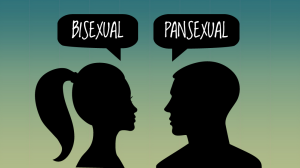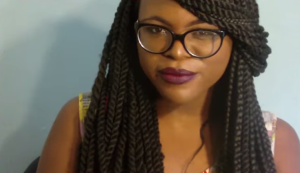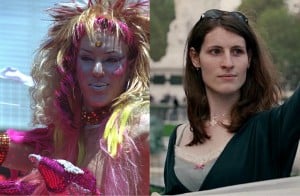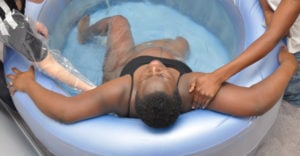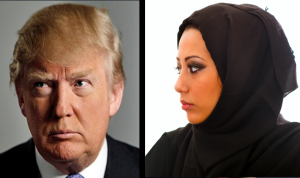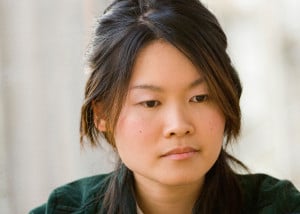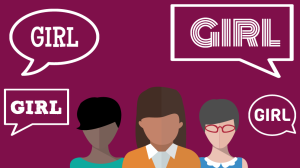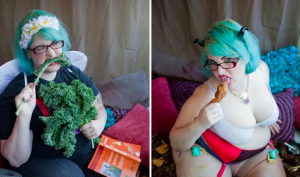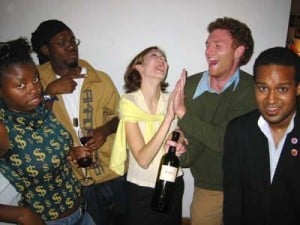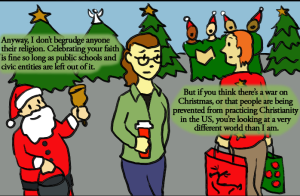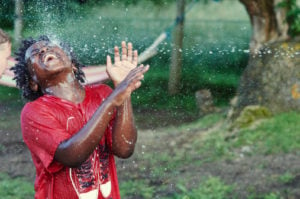“Attraction to more than one gender/agender people.”
What’s the word most people think of? Bisexual.
In reality, that is only the most commonly known word that encompasses a huge umbrella of understanding, thinking, and identities.
Apart from bi, someone might be: pansexual/panromantic, omnisexual, queer, nomasexual, homoflexible, heteroflexible, anthrosexual, multisexual, and/or pomosexual, just to name a few. People who use the words “gay,” “lesbian,” or “straight” are also polysexual sometimes.
I also know that there is a huge range of sexual/romantic orientations and gender identities that exist across cultures, but I am not qualified to discuss anything outside of my own experience in (predominantly white) LGBTQIA+ spaces — so this article will be focused on that.
Today, we will be looking at a debate between two of the most commonly known terms: bisexual and pansexual. Pansexuality as an identity was originally formed for folks to specifically include recognizing attraction to non-binary people. (The idea that bisexuality reinforces the binary is still a common assumption in queer communities.)
Bisexuality responded to allegations of transphobia by clarifying that the definition of bisexuality isn’t always limited to attraction to men and women. Accusations of transphobia on both sides ensued.
As someone who identifies both as non-binary and as trans, I can say that I am thoroughly tired of this debate. Of course, calling out transphobia, on an individual and community level, is vital. But I did not give permission for cisgender folks to use me as leverage for devaluing each other and our communities.
So let’s settle this conversation once and for all. Let’s talk about why this debate is hurting cis polysexuals and trans people of all sexual orientations. Then, let’s talk about ways to support each other instead.
I hope that everyone — cis and trans, monosexual and not — will be able to learn more about uniting to confront common oppression.
Identity policing (that is, trying to define others’ identities for them) is an issue that is larger than the bi-versus-pan debate.
Everyone, I hope, will become less intent on building strict boundaries around polysexual identities — or any identities, for that matter!
Notes on Language
We are a hugely diverse community, and I know that I cannot speak for everyone. In this spirit, the last thing I want to do is define other people’s identities or experiences. I know that the reality of many people’s identities is much more complicated, but for the sake of being able to have this conversation in this one introductory article, these are the words (and their respective operative definitions) that I use here:
- “Monosexual” means attraction to only one gender.
- “Bi” and “pan” are different orientations. We will go into a deeper history of the words and definitions here, but the broadest definitions for both mean “attraction to more than one gender/agender people.”
- Additionally, I use the word “polysexual” to describe anyone who is attracted, romantically and/or physically, to more than one gender and/or agender people. (Polysexual can also have a more specific definition.)
- There is some debate about whether asexual people are included under the broader “non-monosexual.” I know that “polysexual” has the word “sexual” in it. For the purposes of this conversation, I am including asexual people who are romantically attracted to a variety of genders and/or agender people.
- I use “non-binary” to refer to everyone who doesn’t identify as solely male or female, and sometimes refer to non-binary people as trans.
Cis Privilege and Polysexuals
Current debates around the variety of words polysexual people use for themselves leave me feeling a little distant. Cisgender queers often do not recognize how their debates are affecting not only each other, but non-binary and binary trans people.
Although many trans people, binary and non-binary alike, are a part of polysexual movements, their voices are often dominated by a cisgender-focused conversation.
For a perspective that incorporates non-binary orientations, this comic does a fun job of illustrating attraction for this one non-binary person.
This article is especially directed at cisgender polysexual people of all stripes. As a trans polysexual, I hope that cisgender polysexuals will learn how to truly be trans-inclusive, no matter their orientation.
Monosexism: Discrimination Against Polysexuals
Real problems and differences do exist between many people who are polysexual. These should be dealt with in loving community. Right now, though, much of our community is fragmented, despite the many challenges we share.
We — the largest portion of the alphabet soup of gender and sexual/romantic minorities — face disproportionate amounts of discrimination from monosexuals of many orientations.
We face worse physical and mental health problems (including higher suicide risks), employment discrimination, and double the risk of sexual assault for bi women (along with a higher risk for bi men—there’s no break-out for polysexual non-binary people) — and we receieve less support for confronting these and other issues.
A big reason for this is, of course, prejudice against polysexuals — from all sides.
But internally, it’s also from a less unified community. In addition to external oppression, we continue to erode this community by deepening those divisions ourselves.
Feeding into stereotypes is easy to do when there is bitterness in our hearts from our own oppression.
We all know what it’s like to face monosexism. But instead of uniting against our common oppressors, we are looking to find fault with each other.
This debate is highly linguistic with people leveraging etymology and words against each other. Here’s where it starts.
1. The Debate Begins: Pan Identities Form
So, what is the big debate between bi people and pan people? Back when non-binary identities were even less widely recognized in the US, much of the bi movement defined itself as people who were attracted to men and women. (This is still true for some bi people today.)
Pan people attempted to specifically include non-binary people through the word “pan.” This label is often interpreted as “gender is immaterial in my attractions.” Gender can, however, be relevant for pan people — and its importance in general should be acknowledged.
Today and in the past, many people still perceive “pan” as the only orientation that expresses attraction to non-binary people. In reality, this is not the case.
2. Biphobia in This Debate
Many people point out that the focus of this criticism is often on bi people. People who identify as gay or lesbian are not being called out for their non-binary erasure in terms of sexual orientation. Besides, it is totally legitimate for someone to be attracted solely to (binary-identified) men or women.
Some bi people also have a different definition for bisexuality/biromanticism. They say that being bi was never that narrow, and that it actually means “attraction to people from one’s own gender and other gender(s), or agender people.”
Because of this definition, some bi people feel like pan identities are superfluous. There is a perception that pan people identify this way in order to escape the biphobia that comes with a better-known term. They see pan people as contributing to bi erasure by unnecessarily fragmenting and criticizing.
Additionally, there is a deep-seated myth that bi people are the most privileged of all LGBTQIA+ groups. Any discussions of oppressive behavior on the part of the entire bi community must be understood in the context of some people’s denial of biphobia in favor of seeing bi people as unilateral oppressors.
These hurts come from very real biphobia, but it is important to recognize, too, that everyone has a right to self-identify. Pan identities are valid orientations — not just a fad. And the variety of polysexual identities don’t stop with pan!
3. Transphobia in Both Communities
Both communities like to accuse each other of transphobia in an attempt to prove their own superiority. But transphobia and cissexism in both the bi and pan communities are very real. This post breaks down some problems in the bi community. This one talks about some problems in the pan community.
Pan identities were originally formed in order to recognize the existence of non-binary people, but some pan people make misguided attempts at trans inclusion when discussing their attraction. They might say things like, “I’m attracted to men, trans people, and women.”
This falls short because, of course, plenty of trans people are men and women. This statement makes it sound like they aren’t “real” men or women.
Besides, anyone who is attracted to any gender/genderlessness might also be attracted to a trans person, making the extra trans distinction superfluous.
Because people of any orientation might be attracted to a trans person, and might be transphobic regardless of this attraction, it is ludicrous to say that pan people are the only people who are trans-inclusive.
However, it is good to note that openly pan people are often in the position of explaining themselves, their orientations, and non-binary people more often than many binary people of other sexual/romantic orientations. This is because very few people are aware of non-binary and pan identities.
The expanded definition of bisexuality/biromanticism has not always been in conversation, and it is still not always employed. It’s important for everyone to recognize that and work to make a broader definition more widely known.
While some bi people definitely also do explain non-binary attraction when coming out, I know of a number of folks who simply don’t mention that part of their identities and let people assume that “bi” means attraction only to men and women.
Of course, when being out, safety comes first. But no matter what words you use for yourself, if you aren’t ready to admit attraction to a non-binary person, you probably aren’t ready to (publicly) date one, either.
Building Community Across Polysexual Identities
All of the problems brought up by bi and pan people are real problems. But they aren’t limited to only these two communities. Transphobia is an issue across the board. Here are three ways we can be sure to build community across polysexual identities — and be inclusive while doing it.
1. Trans Inclusion Regardless of Orientation
Phew. Just so we’re all clear on the matter, there are tons of ways to be trans-inclusive when dating someone or exploring your attraction to someone. Check out many articles that are already written.
The most basic way to be inclusive is to be clear on our language. If you’re attracted to women only, make that clear. If you’re attracted to men only, make that clear. If you’re attracted to non-binary people, make that clear. No matter what, be sure that you are including trans people in your conceptions of dating.
2. Stop Using Trans People as Political Footballs
One way not to be a friend to trans people, binary or non-binary, is to use us as a political football to devalue someone else’s sexual/romantic orientation. So stop it already.
Instead, call out transphobia where you see it. If someone is using cissexist language, it’s because that individual needs to work on their cissexism, not because they are bi or pan or have any other orientation.
While bi and pan people are busy arguing about who is more or less supportive, we are busy dying, being attacked, and otherwise encountering discrimination at pretty much every turn.
So if you’re finding yourself caught up in this debate, consider your motivations. Are you looking to support trans people or to support your own agenda?
If you’re looking to support trans people, there are actually effective ways to do so.
3. Affirm Identities, Don’t Police Them
Both groups sometimes try to coerce each other into using their own label in the name of their label being the “most right” or in the name of “political unity.” This is identity policing. It is never okay.
Only we can define ourselves. Others don’t have to use the same words for themselves in order for us to work together. We can self-identify without tearing others’ identities down.
Use language that values everyone’s perspective. Call into this work folks who are encouraging divisions by affirming our common challenges and goals.
Part of the strength and beauty of our community is its plurality. To advocate for our community, we need to advocate for all of us, just as we are.
***
Let me be very clear. Monosexism is hurting all of us. We do not have the privilege to deepen these divisions. We do not have the extra energy to continue to find fault with each other.
The challenges we face are too great. And even if they weren’t—um, wouldn’t we want to have a more loving, vibrant community anyway?
Loving, vibrant community doesn’t come from “let’s have things my way.” It comes from recognizing and caring for others just as they are.
Let’s make that happen.
Ultimately, finding words to define ourselves is about finding connection with ourselves and each other. When they get in the way of us doing that, it’s time to reevaluate.
So let’s respect each other’s self-identification and have each other’s backs when people try to tear us down.
That’s the way to move forward together. That’s the way to hold ourselves and each other in loving community.
[do_widget id=”text-101″]
Adrian Ballou is a Contributing Writer for Everyday Feminism and a genderqueer writer, artist, activist, and educator. They graduated cum laude from the transmisogynistic Smith College in 2011, and they have spent the past several years doing youth development work both inside and outside the classroom. They particularly enjoy developing and delivering curriculum on social justice education and youth organizing. In their free time, they cook lots of food, sing songs, make art, and practice their Spanish, Hindi, and Urdu. Read their articles here.
Search our 3000+ articles!
Read our articles about:
Our online racial justice training
Used by hundreds of universities, non-profits, and businesses.
Click to learn more


